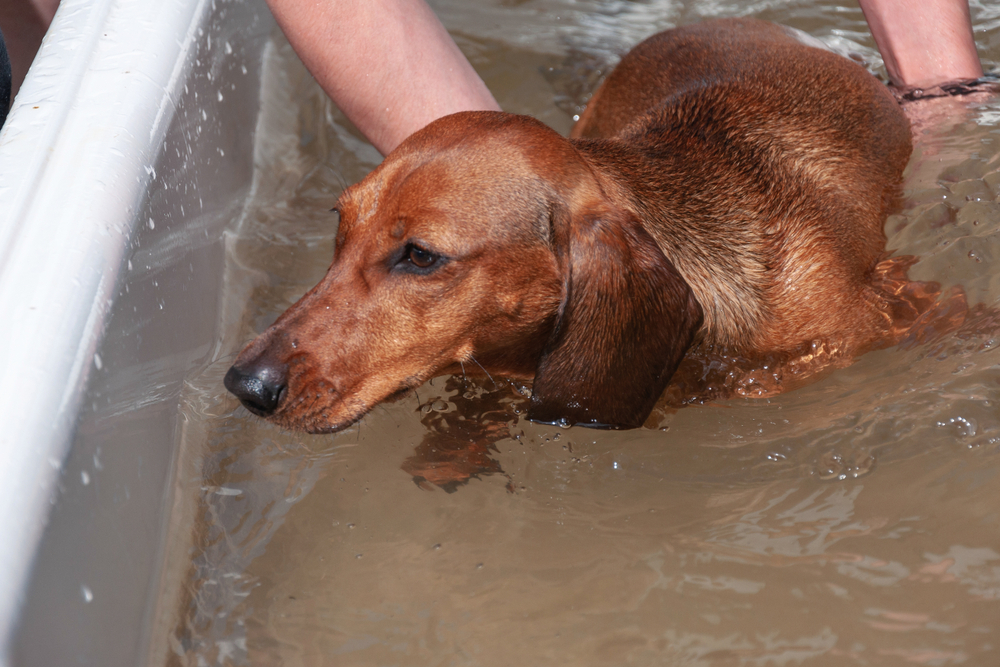
Stepping Up: TPLO Surgery and Comprehensive Pet Rehabilitation for Optimal Recovery
Over the years, veterinary medicine has seen significant advancements in surgical techniques and rehabilitation methods, particularly in the treatment of orthopedic conditions in pets. One such procedure that has gained popularity is Tibial Plateau Leveling Osteotomy (TPLO). TPLO surgery, coupled with specialized physical rehabilitation, has revolutionized the way we care for pets with cruciate ligament injuries, which is the most common injury seen by surgeons and physical rehabilitation practitioners. In this blog, we’ll explore what TPLO surgery entails, its benefits, and the crucial role rehabilitation plays in ensuring successful outcomes for our furry companions.
Understanding TPLO Surgery
TPLO surgery is a sophisticated orthopedic procedure primarily performed to address cranial cruciate ligament (CCL) injuries in dogs, which are akin to the anterior cruciate ligament (ACL) injuries in humans. Unlike traditional surgical methods that aim to stabilize the knee joint by replacing the ruptured ligament with artificial materials, TPLO alters the biomechanics of the knee joint itself.
During TPLO surgery, the veterinarian makes a precise cut in the top of the tibia (shin bone) and rotates it to a new angle, thereby eliminating the need for the CCL to stabilize the joint during weight-bearing activities. This modification effectively changes the dynamics of the knee joint, allowing for more stable and pain-free movement.


Benefits of TPLO Surgery
• Improved Joint Stability: By altering the knee joint’s biomechanics, TPLO surgery provides enhanced stability, reducing the risk of future joint instability and secondary injuries.
• Faster Recovery: TPLO surgery often leads to quicker recovery times compared to other methods, allowing pets to return to normal activities sooner.
• Long-term Success: Studies have shown that TPLO surgery offers excellent long-term outcomes, with many pets experiencing significant improvement in mobility and quality of life.
The Role of Pet Physical Rehabilitation
Physical Therapy: Physical therapy techniques such as therapeutic exercises, massage, and range of motion exercises help improve muscle strength, joint flexibility, and overall mobility.
Hydrotherapy: Through water buoyancy and resistance, underwater treadmill sessions or swimming can provide low-impact exercise, facilitating muscle strengthening and joint mobilization without placing excessive strain on the healing joint.
Laser Therapy: Laser therapy utilizes specific wavelengths of light to penetrate deep into tissues, promoting cellular repair, thereby reducing inflammation and pain.
Sound Wave Therapy: Sound Wave Therapy employs various sound frequencies and vibrations to increase blood flow, reduce inflammation and pain. Compensatory muscles and tendons become painful from weight shifting, this is mainly found in the iliopsoas muscle. Sound Wave therapy is very effective in reduction of pain for these compensatory issues.
Weight Management: Maintaining a healthy body weight is crucial for reducing stress on the joints and preventing further injury. A tailored diet and exercise plan can help achieve and maintain an optimal weight for the pet.
Pain Management: Pain management protocols, including medication and therapeutic modalities such as acupuncture, are employed to alleviate discomfort and promote healing.
Optimizing Recovery: A Holistic Approach to Pet Rehabilitation After TPLO Surgery
For pet owners and veterinarians seeking the best possible outcomes for pets undergoing TPLO surgery, considering comprehensive rehabilitation is paramount. Companion Animal Health & Rehabilitation Center offers specialized rehabilitation services tailored to the unique needs of pre and post-operative patients. With a team of dedicated professionals and state-of-the-art facility, we are committed to maximizing your pet’s recovery and enhancing their quality of life. Trust in the power of advanced veterinary medicine and rehabilitation to provide your furry family member with the care they deserve.







